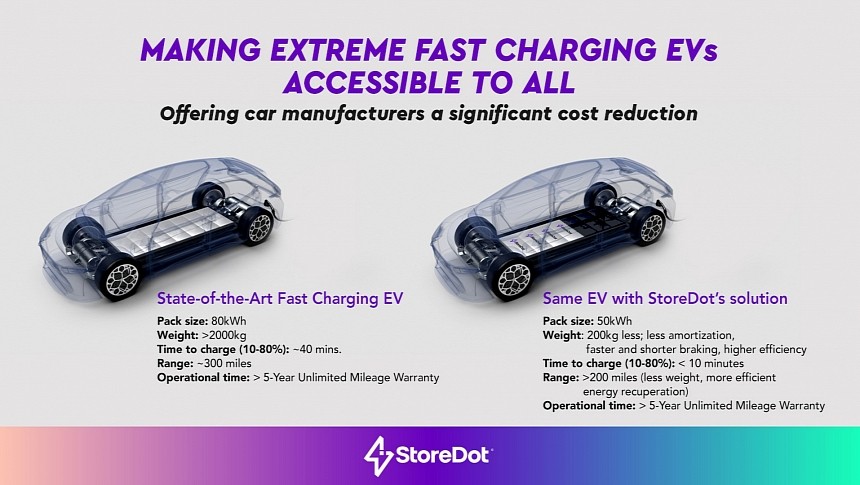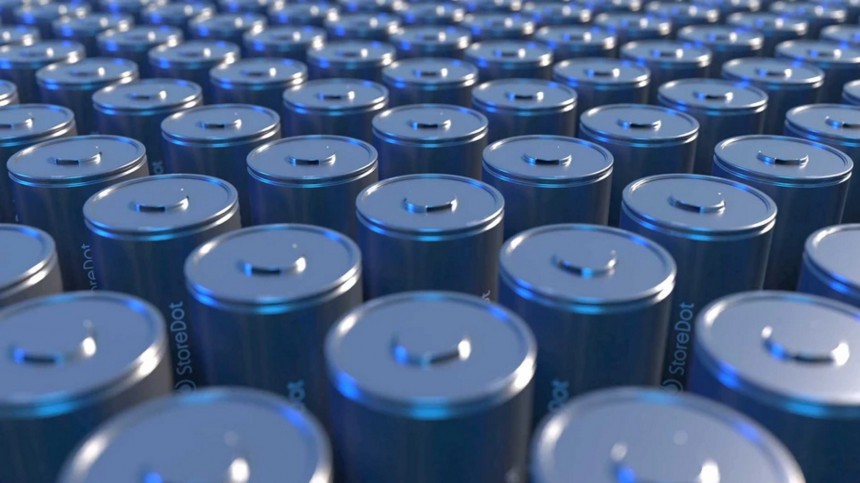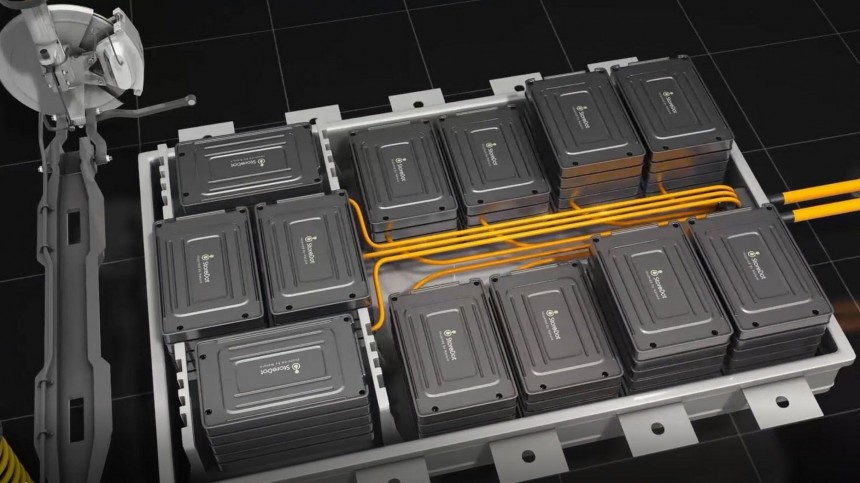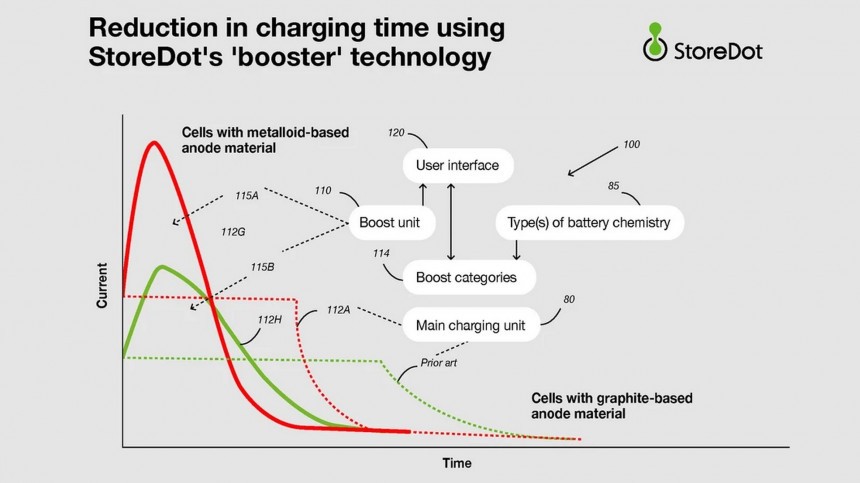VinFast publicly believes the StoreDot technology for XFC (Extreme Fast Charge) cells is promising. It would not have invested in the Israeli battery company's Series D funding round in January 2022 if that weren't the case. StoreDot's new announcement only confirms how close these two companies are. According to the Israeli startup, it just concluded a joint development agreement with VinES, the battery manufacturing arm of Vingroup. You already know which car company this Vietnamese giant owns, right?
StoreDot licensed the XFC technology to VinES, which will produce these cells in different form factors. When they are ready, the battery manufacturer will deliver the XFC batteries to VinFast. Both companies believe the commercial premiere will happen in 2025. That's a year after the Israeli startup said it would start delivering its 100in5 cells. It is easier to think that this is a delay rather than that StoreDot will provide its XFC batteries to a different carmaker.
This could represent a great competitive advantage for VinFast. So far, the company has failed to impress automotive journalists with its vehicles. Although they present Pininfarina's design, their suspensions, power delivery, and several other crucial handling aspects have been harshly criticized. If VinFast is not working to fix that or is not fast enough to make the necessary improvements, the XFC cells may become a marketing argument to attract buyers. After all, recovering 100 miles of range in only five minutes may be pretty convincing. That obviously depends on having adequate fast chargers. StoreDot never said at which charging speed that was possible.
When the first VinFast with XFC cells arrives, it will be interesting to check which path the Vingroup decides to follow with it. StoreDot suggested that its XFC batteries would allow carmakers to reduce their average battery packs from 80 kWh to 50 kWh without major losses in terms of convenience. Again, that reasoning only works if these vehicles with a lighter XFC battery pack can find fast chargers able to make the best use of StoreDot's technology.
Supposing these fast chargers were widely available, a car with an XFC 50-kWh battery pack would save 200 kilograms (441 pounds) and around $4,500. This cost-saving possibility could give its owner a more affordable vehicle and a battery pack replacement cost that might not turn their car into junkyard material should it fail out of warranty. However, it is this mass reduction that could turn such a BEV into a safer and more efficient machine.
VinFast may either create cars with smaller battery packs or keep them at the same capacity and just use their fast charging capabilities as a plus. According to the company, XFC cells can retain more energy from regenerative braking, which makes the BEVs more efficient. It is almost as if they had ultracapacitors that did not discharge as fast as these components do. Batteries retain electricity for more time but are also harder to charge. If only these XFC cells had a higher energy density, right?
Well, this is what CATL said it achieved with its condensed cells. The new batteries from the world's largest cell manufacturer achieved an impressive energy density of 500 Wh/kg, which means they can hold 1 kWh in 2 kg (4.4 lb). Multiply that by 100, and you'll have a 100-kWh battery pack tipping the scale at 200 kg. In other words, it will weigh as much as the 30 kWh StoreDot cells will help save in a standard 80-kWh battery pack. And this is not the only bad news CATL has to give to the Israeli startup.
CATL said it was working on the cell to comply with "aviation-grade safety and quality requirements." The Chinese cell maker "will also launch the automotive-grade version of condensed batteries, which are expected to be put into mass production within this year." Yes, 2023, not 2024 or 2025. CATL did not disclose how fast these condensed cells can be recharged. It merely said that they present "excellent charge and discharge performance as well as good safety performance."
If it is remotely close to what XFC batteries can offer, things will be really tough for StoreDot. Even if the CATL's condensed cells charge at the same pace as current batteries, being so much more energy-dense will help it avoid charging sessions with longer ranges. I've made this question before and must make it again: isn't the Israeli startup at a high risk of delivering a technology that will already be obsolete when it is finally available?
The way StoreDot has such a well-defined schedule for its own progress, it seems that XFC cells are either just respecting a validation requirements timetable or that the startup is doing what it can with a tight budget. Whatever the reason is for them to arrive only by 2025 is something only StoreDot may explain. One thing is sure: if its technology was ready for commercial debut, the Israeli startup would have already put it into production or licensed it to anyone who could do that, whether for VinFast to use them or for any of the 15 companies that StoreDot said are testing its XFC batteries.
This could represent a great competitive advantage for VinFast. So far, the company has failed to impress automotive journalists with its vehicles. Although they present Pininfarina's design, their suspensions, power delivery, and several other crucial handling aspects have been harshly criticized. If VinFast is not working to fix that or is not fast enough to make the necessary improvements, the XFC cells may become a marketing argument to attract buyers. After all, recovering 100 miles of range in only five minutes may be pretty convincing. That obviously depends on having adequate fast chargers. StoreDot never said at which charging speed that was possible.
Supposing these fast chargers were widely available, a car with an XFC 50-kWh battery pack would save 200 kilograms (441 pounds) and around $4,500. This cost-saving possibility could give its owner a more affordable vehicle and a battery pack replacement cost that might not turn their car into junkyard material should it fail out of warranty. However, it is this mass reduction that could turn such a BEV into a safer and more efficient machine.
Well, this is what CATL said it achieved with its condensed cells. The new batteries from the world's largest cell manufacturer achieved an impressive energy density of 500 Wh/kg, which means they can hold 1 kWh in 2 kg (4.4 lb). Multiply that by 100, and you'll have a 100-kWh battery pack tipping the scale at 200 kg. In other words, it will weigh as much as the 30 kWh StoreDot cells will help save in a standard 80-kWh battery pack. And this is not the only bad news CATL has to give to the Israeli startup.
If it is remotely close to what XFC batteries can offer, things will be really tough for StoreDot. Even if the CATL's condensed cells charge at the same pace as current batteries, being so much more energy-dense will help it avoid charging sessions with longer ranges. I've made this question before and must make it again: isn't the Israeli startup at a high risk of delivering a technology that will already be obsolete when it is finally available?

















